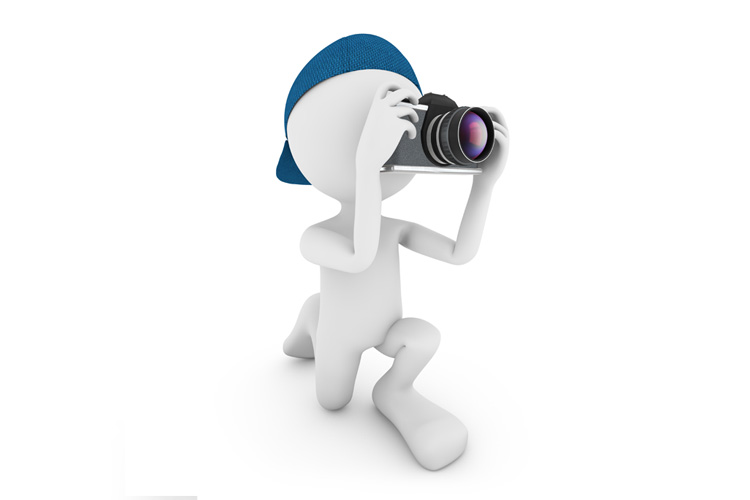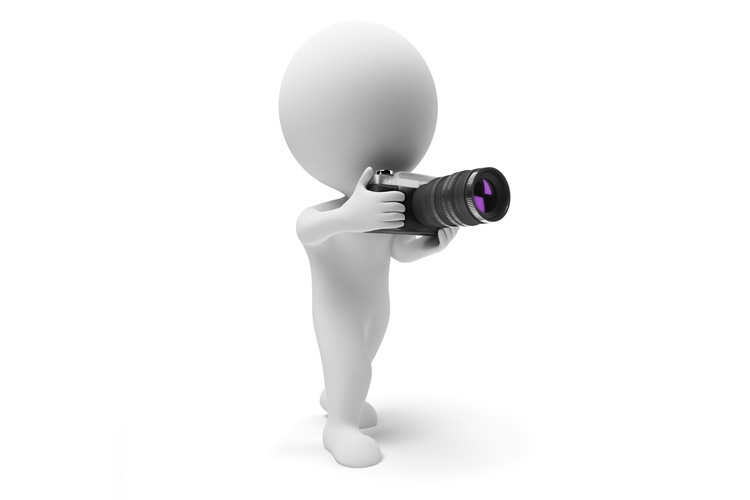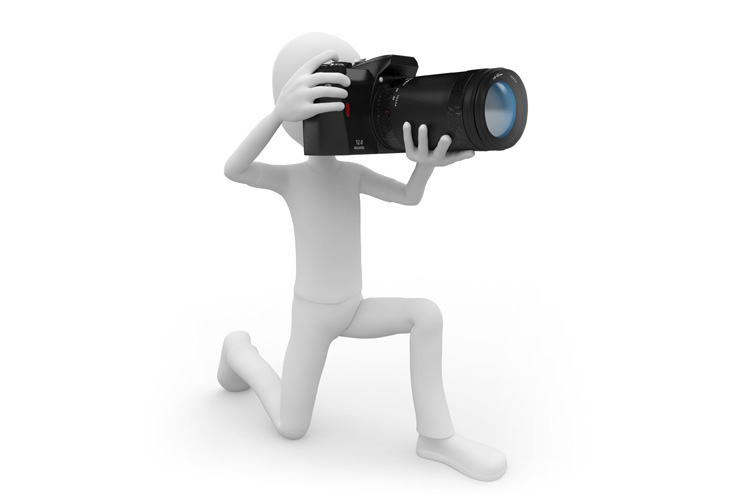I was inspired to write this post after Wednesday’s “Blind Photo Critiques” on The Grid (Rick Sammon was my in-studio guest, and he was awesome, as always). When it comes to The Grid, we often get hundreds of submissions for these monthly Blind Critiques, but we only get to showing a handful on the air. One reason is — so many of the images are the same because so many photographers are stuck in a particular stage of their development, so their photos (even if they are of different types of subjects) look essentially the same. That’s why today I wanted to break these stages down so some folks might see which stage they’re at, and my advice on how to level up to the next stage.
I’m kinda “telling it like it is” here, speaking frankly and honestly — not to hurt feelings, but sugar coating all this doesn’t help move anybody further down their path. In fact, it almost reinforces why they should stay right where they are.

STAGE ONE: Camera Owner
You’ve been getting lots of good comments from friends on your Instagram posts taken with your cell phone’s camera — so much so that you decided to buy a “real camera.” You were pretty sure buying a nice camera like this was going to take your Instagram feed over the top, and your friends can’t wait to see you blow it up on Instagram now, but…not only do your photos not look better — they look worse. This thing is way more complicated than you thought, and just using it as a heavy-cell phone replacement isn’t giving you the amazing shots you thought you’d be getting. Here’s why: buying a DSLR or Mirrorless “real” camera doesn’t make you a photographer any more than buying a saxophone makes you a sax player. At this stage, you are simply “A camera owner,” and you’re just taking pictures (and you still call them “pictures”). Now that you’re struggling, you’re focused on trying to figure out setting, buried deep in the menus on the back of your camera, turn on the secret for making great photos. You know it’s in there somewhere — but where?
How to Level Up: If that sounds like the agonizing stage you’re currently at, here’s how to level up: Stop looking in the menus. Ignore all the other stuff. Just focus on learning what the Aperture (f/stop), Shutter Speed, and ISO all mean, and how they work together. Forget everything else for now, because once you understand those and get used to adjusting them on your camera, you can stop worrying about the settings and start working on making great pictures (and yes, you still have to call them “pictures” for a little while longer. It’s the law).

STAGE TWO: Snapshot Maker
You’ve got a feel for how to use your camera, and you’re taking time to go out shooting. Maybe you’re doing some street photography, or heading out to the countryside and actively looking for shots. However, at this stage, you’re making tons of technical mistakes. Your horizon line is always in the center; you’ve got trees growing out of people’s heads; there are distracting things pulling the viewer’s eye away from your subject, and the rule of thirds is what you employ when you order one dessert, and the waiter brings you three forks. Since you haven’t learned the basic rules of composition yet, you don’t realize your photos have all these mistakes, so you’re actually in a fairly good place. In fact, you’re in one of the happiest places you can be as a photographer. You stink, but you don’t know it, but it’s OK, but your friends aren’t any good either, so they can recognize that you’re making all these mistakes, so they can’t point them out. In short, you’re taking snapshots — they look like the same shot that a stranger with a cell phone would get if they walked up beside you while you were taking yours. If you compared shots, they would similar; yours would just have more megapixels. The good news is — you’ve stopped calling them “Pictures.”
How to Level Up: If that sounds like you (if you thought to yourself, “what’s the rule of thirds?” it’s you), you need to do some learnin’. Buy a book – take an online course (I know, it sounds like I’m plugging my stuff, but this is what I’d tell a friend), or join your local photo group and tell them right up front, “I’m new to this.” You need local photography friends. You can help each other, share what you’ve learned, and you’ll have someone to go shooting with, so you’ll go shooting more often. Photographers at these groups are really happy to help new photographers when they meet them in person. However, for your progress and self-esteem, I would absolutely stay out of public online photography forums. This is where angry people gather to attack anyone showing even the slightest sign of weakness. You might eventually find an answer you were looking for, but it may exact an emotional toll along the way. Make local friends, do a photo walk, attend the local group. You’ll level up much faster, and have more fun doing it.

STAGE THREE: Photo Taker
You’ve learned the basic rules; you’re very comfortable with your camera, and you’re going out shooting pretty regularly, but what you’re spending your time shooting at this stage are photos that you think you’re supposed to shoot. Things that you think more accomplished photographers would shoot, and you convert your images to black and white because they feel more ‘serious’ and more ‘artsy’ to you, (but most of these images don’t really make great black and whites anyway). It’s like you’re saying to yourself, “This is what a good photographer would be shooting…right?” You’re shooting dead tree photos, homeless people in town, railroad tracks, the old bridge, and while they are technically good, they’re not interesting (well, they’re interesting to you but only because you’re experiencing what they call the “Gee, I made that!” effect, where you’re excited at what you made because you made it, and you’re impressed that you could do that. Everybody else sees a black and white photo of a bridge in bad light – one they drive past every day, and to them, it looks just like it looks. You want people to look at your images and say “Wow!” Not, “Hey, there’s the old bridge.”
How to Level Up: To move up at this stage, you need to figure out what type of photographer you want to be. You can’t be great at every genre — you’ve got to pick some topic, some category to really focus on it. Be it flower photography or portraits; landscape or travel, wedding or commercial products — if you want to get really good at something, you’ve got to find what that something is. What’s the thing that really excites you — the thing that people tell you you’re really good at. What do you seem to really have a knack for? Listen to that voice inside you, and follow where it leads. Once you figure out what that genre is, you need to go all in. You need to study everything you can get your hands on; you need to read the top three books on the topic; you need to start getting the equipment together you’ll need to be a success, and you need to pour your time, energy, and most important practice into that genre. Don’t just read about it, and watch courses, that will make you an authority on the topic — but that won’t create great images. Practice will. That’s the secret at this stage — find out what it is you want to be, and focus on that; practice that, dive into that. You’ll be amazed at the results.

STAGE FOUR: Emerging Photographer
You’re getting there. You’re doing lots projects you see on the Web. You’re photographing water splashes, and you’re doing the steel wool at night spark trick, and you’re doing long exposure shots of cars driving by; you’re adding edgy film-look borders around your images. You’re learning lots of different, fun techniques one after another. These personal assignments make you feel like you’re really growing, and if a client were to call and they needed a steel wool sparks photo or a water drop, you’d get that gig in a heartbeat. You’ve upgraded your gear, you’ve bought some really nice lenses (and you call your lenses “glass”), and you’re not taking pictures, and you’re not taking photos, you’re creating “images.” You’re starting to think about getting a camera body that’s been converted for infrared, and you have long conversations with other photographers about the type of bokeh certain lenses have. You feel like you’re really making progress, but inside you know you still have a lot to learn (which is why you’re talking about bokeh — it makes you feel “next level,” but in reality, the next level shooters don’t talk about bokeh). In fact, the more you learn, the more you realize how much there really is to learn about the bigger picture of photography, and when you watch a course from Jay Maisel, you realize how truly far you have to go. The good news is: you now fully realize there is no setting in your camera that makes great photos. In fact, you’re almost at the point where you realize how little the camera make and model matter.
How to Level Up: You’re good at all the technical stuff, so put down the camera, and start looking at the work of photographers you admire. Don’t just look at it. Study it. Break it down. Become a photographic detective — figure out where they put the light, or where they positioned their subject. Look at their subject. Look at the scene, how they composed it. Figure out what it is about their work that makes their images so special. If you can’t figure out how they’re doing it, what chance do you have of stumbling upon it in your work? You have to study and learn how the masters do it, and you have to learn how to emulate their looks, so your own look and your own style will emerge from it (by the way, none of your personal style and look will include steel wool). Remember, you’re not just looking, you’re studying — study the work of the type of photographer you want to be — that’s how you level up. You know what your goal is. What you’re aiming for, and now perhaps even how to get there. The agonizing part of this is simply that there is no shortcut — you have the road map now, but you have to make the trip to get there. There are no shortcuts for experience — you get experience by doing it again and again. Through practice. Through trying and failing, and you keep on trying. I think it was Caesar who said, “Experience is the teacher of all things.” He also said, “This salad could really use some croutons.” This is the 2nd most agonizing and frustrating stage of being a photographer because breaking out of this stage isn’t something you buy at B&H. It’s not a camera. It’s not a lens. It’s seeing. It’s creativity. It’s things they don’t sell.

STAGE FIVE: Frustrated Photographer
You’re an accomplished photographer at this stage. A pro-level shooter. You’ve entered photo contests, maybe even won a few. You’re getting some paid work here and there, too. You’re confident in your skills, you’re getting the most from your gear, and you know it inside and out. In fact, you’re so confident that you don’t have to even think about it that much — it’s all second-nature at this point, in fact, it’s becoming routine. You should be absolutely delighted at this stage, but in reality, this is the #1 most-agonizing stage. You’re perhaps more frustrated and disappointed with your own work than any time in your career. It’s because you know in your heart, your best images are still inside you, but you can’t for the life of you coax them out. You look at the best image in your portfolio, and you think to yourself, “I know I can make a better image than this one.” And you know what? You’re actually right. But it’s going to take some work. The better you get, the harder it is to get measurably better. When you were in Stage Two and Stage Three, you were making big progress. Now, you don’t learn something new every day. Maybe you pick up something new just once every couple of months. How do you make amazing images when you’re learning so little?
How to Level Up: You’re going to need to stretch yourself, but do it in a way that’s relevant and meaningful to the type of photographer you are. It’s time to invest in yourself. It’s time to invest in making the kind of images you’ve always dreamed of. This is serious, personal work, and something that can propel you and keep you engaged and growing for years to come. For example, if you’re a landscape photographer, don’t buy another lens or a better camera body. Buy an airplane ticket. Travel to Patagonia, or Greenland. Head to the Sahara Desert or Namibia or Antartica. Go to places that will inspire you; places that will challenge you; places where you have opportunities to make the shots of a lifetime. It’s not going to happen at that barn in Wyoming or at Delicate Arch in Moab. You need to go “next level.” If you’re a fashion photographer, go to New York, LA, Miami, London or Milan. Hire a brilliant stylist, an incredible make-up artist, and a fantastic model, and shoot in a world class location. You need a great team, and the best ones are literally in those cities. It will transform your work more than a new body, or a new lens will ever do. If you’re an automotive photographer, stop shooting Cameros in a parking garage. Fly to an amazing location (maybe the Scottish Highlands, or even Mount Tam or the Pacific Coast Highway in California); rent a Ferrari (or a Bentley or a Jag), and do it right. It’s time to invest in yourself and into creating those images that push you, your images, and your career forward.

I hope you found that helpful, and if you saw yourself in one of those stages (we’re all in one of them, or transitioning between them, right?), don’t get upset or be defensive, especially if one hit really close to home, and it’s a stage you’re not happy identifying with. We all just want the same thing. We want to make great images, and we want to have fun doing it. Wherever you are in your journey, whichever stage you’re at, just know you’re simply passing through it. Don’t focus on where you are; focus on how to level up, and you won’t be at that stage very long.
I wish you the very best on your photographic journey. :)
Best,
-Scott
The post The Five Angonizing Stages of Photography appeared first on Scott Kelby's Photoshop Insider.
from Scott Kelby's Photoshop Insider http://ift.tt/2GWyq0A
via IFTTT

No comments:
Post a Comment